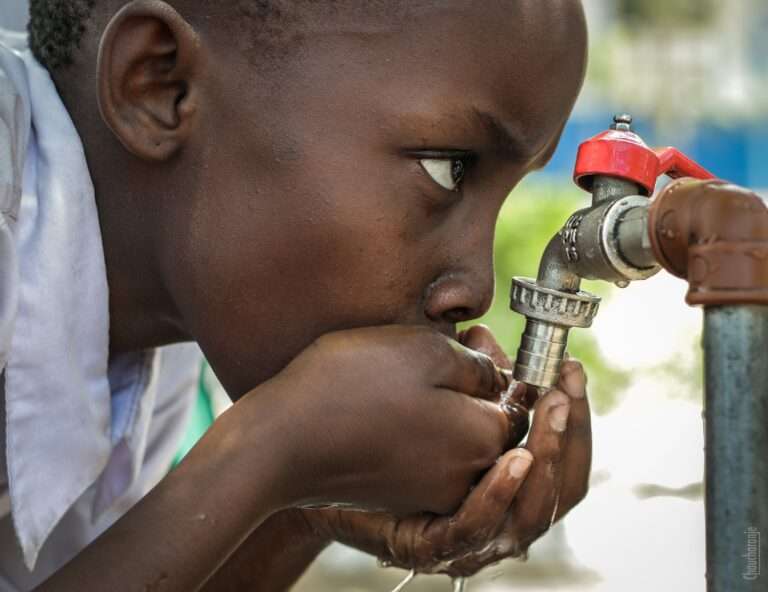Can Boreholes Dry Up?
Can boreholes get dry? It’s a question that many people who rely on these vital water sources wonder about.
Consider this: your borehole’s dependable tap suddenly runs dry, leaving you perplexed and concerned. Understanding the factors causing borehole depletion is critical in a world where water scarcity is becoming increasingly common.
In this illuminating inquiry, we dig into the exciting domain of boreholes and their unpredictable nature. We discover the complexities that can change a once-abundant water source into a parched letdown, from geological subtleties to human-induced pressures.
You’ll uncover the subtle symptoms that may precede a borehole drying up, arming you with the knowledge to solve possible difficulties ahead of time.
Join us on a tour through the underground channels of aquifers and aquitards as we deconstruct the delicate balance that keeps boreholes operational.
Whether you’re a concerned homeowner or a community that relies on boreholes for survival, this post will keep you informed and active. Let us reveal the mysteries beneath the surface and preserve the longevity of our valuable boreholes.

Table of Contents
Factors Influencing Borehole Water Availability
The prospect of boreholes drying up looms large in the delicate balance of water resources, causing alarm for communities and individuals alike.
Understanding and tackling this critical issue requires unraveling the rich tapestry of factors impacting borehole water availability.
Natural Atmospheric Conditions.
Consider the atmosphere of a conductor conducting the delicate ballet of water replenishment.
Boreholes, vulnerable to the vagaries of weather, can confront difficulties when precipitation patterns vary. As climate change adds uncertainty, relying on boreholes becomes a dangerous tango with air circumstances.
Exploring the subtleties of how natural forces affect boreholes keeps us alert to potential threats in the skies above.
Changes in Underground Water Levels.
There is a dynamic underworld of aquifers and water reservoirs beneath our feet. Changes in underground water levels, which are affected by various variables, pose a direct danger to borehole sustainability.
Understanding the minor variations beneath the surface is similar to reading the Earth’s pulse. In this adventure, we travel through the underground environment, looking for evidence of potential borehole dry-outs.
Human Actions Excessive Pumping.
Our actions resonate below in the complicated web of human activities, influencing the very source of our borehole water. Fueled by rising water demand, excessive pumping can upset the delicate balance, pushing boreholes to the depletion edge.
Investigating the implications of human interventions reveals the role humans play in ensuring or compromising the survival of these essential water supplies.
The issue of borehole drying involves a complex interplay of natural and artificial variables.
We empower ourselves to adopt sustainable habits by peeling back the layers of these influences, ensuring the ongoing flow of this vital resource for future generations.

Signs and Symptoms of a Drying Borehole
Boreholes, the lifelines of many towns, provide an essential water source. The unsettling threat of boreholes drying up looms in the shadows.
Recognizing the signs and symptoms of a drying borehole is analogous to reading nature’s subtle language, which urges us to take notice and act before the well runs dry.
Reduced Water Flow Rate.
Imagine turning on your faucet and sensing a reduced flow—an unnerving scenario for anyone who relies on borehole water.
The first warning indication that a borehole is about to dry up is a considerable decrease in water flow rate.
As we investigate these phenomena, we discover subtle clues that, if neglected, might lead to a more profound and disturbing reality: boreholes drying up, leaving people without water.
Increased Sediment or Mineral Content.
A clear stream of water is reassuring, but warning bells should sound when sediment or minerals begin to veil the once-pristine liquid.
Increased sediment or mineral concentration in borehole water indicates altering subsurface dynamics.
In this exploration, we explore the reasons for this murky metamorphosis, offering insight into how these changes can eventually contribute to the grim prospect of boreholes drying up.
Pump Mechanical Issues.
The pump, the unsung hero of borehole operation, can serve as a warning sign of imminent water scarcity.
Frequent mechanical problems with the pump could signal that the borehole works overtime to provide a finite resource. As we delve into the technical complexities, we discover the link between pump failures and the imminent threat of boreholes drying up.
Understanding this relationship is critical for taking preventative steps that can extend the life of boreholes.
Deciphering the indications and symptoms of a depleting borehole means taking a proactive stand against water scarcity.
We provide communities and individuals with the knowledge needed to solve these concerns before the scary phrase “boreholes dry up” becomes a stark reality by being familiar with the terminology of lower flow rates, increasing silt, and pump distress.
It’s a voyage into the heart of water sources, where early discovery is critical to maintaining the lifeblood provided by boreholes.

Can Boreholes Dry Up?
Boreholes drying out may seem unthinkable, but investigating the complicated dynamics of water sources reveals a vulnerability that communities and individuals cannot afford to ignore.
Let’s embark on a journey to debunk the myth that boreholes are drying up. We will investigate the delicate balance between reliance on subsurface aquifers, the risks associated with human activity, and the gloomy influence of drought conditions.
Borehole Dependence and Replenishment.
Like silent sentinels, boreholes get nutrition from the enormous subsurface aquifers that crisscross beneath our feet.
This reliance, however, is a delicate dance with nature. As we learn more about aquifers and their replenishment cycles, we realize how vulnerable it is to rely on these subsurface reserves.
Understanding this link is the first step toward understanding how, under certain conditions, the unsettling prospect of boreholes drying up might become a stark reality.
Over-pumping and Excessive Water Use Pose Dangers.
Human activities, driven by an ever-increasing need for water, pose a real threat to borehole lifetime.
Over-pumping, spurred by a need for more water, can upset the delicate balance, pushing boreholes dangerously close to depletion. Exploring the dangers of excessive water use reveals a vital crossroads at which human actions collide with the scary phrase “boreholes dry up.”
It’s a cautionary tale, pushing us to use sustainable ways to protect this valuable resource.
Drought conditions have the potential to impact borehole water availability.
Drought conditions are another wildcard thrown into the game by nature in its infinite intricacy. As climatic patterns evolve and arid periods grow more common, the possibility of borehole water availability being impacted by drought becomes a grim reality.

In this investigation, we investigate the relationship between climatic dynamics and borehole susceptibility.
It’s a harsh reminder that, as weather patterns change, the threat of boreholes drying up becomes a physical problem that demands our attention.
Whether boreholes can genuinely dry up is a tangible concern that requires our awareness and response.
We equip ourselves to tackle this pressing issue head-on by:
Navigating the aquifer dependencies
Mitigating the risks of over-pumping
Acknowledging the impact of drought conditions
Ensuring that the ominous scenario of boreholes drying up remains a distant possibility rather than a harsh reality.
Preventative Measures to Maintain Borehole Water Supply
The danger of drying boreholes out is a harsh reminder of the delicate balance we tread in the ever-changing water conservation landscape. However, the story does not have to be one of approaching scarcity.
We can protect our boreholes against the dreadful potential of drying up by taking preventative actions.
Let us examine the practical strategies that enable towns and people to protect their water supply.
Implementing Sustainable Water Usage Practices.
Our everyday water habits are the first defence against drying out boreholes. Implementing sustainable water usage techniques is more than a slogan; it is a practical answer.
We are charting a route toward resilience as we investigate strategies to cut water consumption, recycle, and embrace conservation.
It’s a rallying cry, pushing us to be responsible stewards of this valuable resource, ensuring that the scary phrase “boreholes dry up” stays a distant concern.
Regular Borehole and Pump System Maintenance.
Consider the borehole a well-tuned instrument; frequent maintenance is the melody that keeps it operating.
We handle potential difficulties through routine checkups on the borehole and pump system. This investigation delves into the significance of timely inspections, lubrication, and prompt repairs.
It’s a voyage into the heart of borehole lifespan, where diligent maintenance becomes the anthem that keeps the borehole from drying out.
Monitoring Water Levels and Underground Aquifer Conditions.
Knowledge is power when it comes to sustaining borehole water supplies. We acquire insights into the heartbeat of our water source by actively monitoring water levels and underlying aquifer conditions.
We decipher the indications that precede issues in this examination to ensure prompt replies. This strategic approach allows us to adjust to changing conditions and avoid the dreadful prospect of boreholes drying up.
Finally, these preventive actions transform the story of boreholes drying up from dread to resilience. Sustainable methods, regular maintenance, and constant monitoring of subsurface conditions become the pillars of a solid plan.
Implementing these techniques strengthens our boreholes and promotes a more sustainable water future. The worry of water scarcity fades, and “boreholes drying up” becomes a distant memory.
Solutions for Drying Boreholes
The search for answers takes center stage in the face of drying boreholes, providing a ray of optimism amid water scarcity worries.
Use practical steps and inventive strategies to resurrect parched boreholes and ensure a sustainable water future.
Investigating Alternative Water Sources.
The hunt for alternate water sources becomes critical when boreholes are on the verge of drying up.

Consider this a search for hidden gems beneath the Earth’s surface. In this investigation, we look into the possibility of tapping into unconventional water reserves, such as rainwater collection, recycled water, and desalination.
It’s a bold approach that broadens the range of possibilities beyond the haunting phrase “boreholes dry up.”
Possible Rehabilitation Methods for a Drying Borehole.
Reviving a drying borehole necessitates a combination of science and intervention. Consider it a healing procedure for a resource that has seen better days.
As we investigate possible rehabilitation techniques, we discover technologies such as hydrofracturing, chemical treatments, and well redevelopment.
These approaches give boreholes new life, turning them from desolate echoes of poverty into thriving sources of nutrition.
It’s a voyage of restoration in which the scary prospect of boreholes drying up gives way to the hopeful possibility of resurrection.
Considerations for New Borehole Drilling in Various Locations.
The path to water security can often take us to unfamiliar territory. Drilling new boreholes in various sites becomes a strategic concern, similar to casting a giant net to ensure abundance.
This investigation considers geological conditions, aquifer depth, and community needs.
It’s a project that goes beyond addressing present issues; it’s about future-proofing our water supply, making sure that the threat of boreholes drying up stays a distant concern.
Drying borehole solutions go beyond normal problem-solving. They have a forward-thinking mindset that values innovation and adaptability.
We address present needs while paving the road for a water-resilient tomorrow by investigating alternate sources, restoring tired boreholes, and strategically drilling in new sites.
It’s about how the fear of boreholes drying up evolves into a tale of tenacity, resourcefulness, and a commitment to securing communities’ lifeblood.
Conclusion
The investigation of the subject “Can boreholes dry up?” reveals the complex elements influencing water supply, ranging from dependency on subsurface aquifers to the dangers of over-pumping and the unpredictability of drought conditions.
The vulnerability of boreholes is highlighted, highlighting the importance of spotting warning indications such as decreasing flow rates, increasing silt, and pump problems.
Beyond the hurdles, the tale emphasizes proactive monitoring and conservation actions as critical allies. Communities can prevent the looming threat of boreholes drying up by implementing sustainable water usage, regular maintenance, and attentive tracking of aquifer conditions.
While the unsettling phrase “boreholes dry up” may cause fear, seeking professional assistance is a strategic step rather than a failure. Professionals provide skills to examine, rehab, or investigate alternate options, confirming that our agency in preventing borehole depletion is intact.
Finally, the question persists, but so does our ability to answer it. Boreholes can dry up, but we can maintain the continuous flow of the lifeblood that sustains our communities via vigilance, preventative measures, and collaboration with professionals.
Related topics
Borehole Water Safety: Ensuring Safe Drinking






